News
A well-known tropical island’s best kept secret
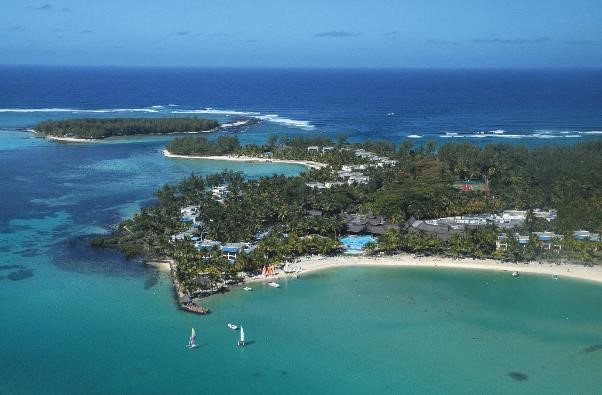
Mauritius has never been punted as a diving destination. Honeymooners go there, families go there to enjoy the world class water sports, golfers go there to enjoy superbly manicured golf courses, but diving? Maybe with your partner on a lazy Sunday. For the Europeans and Scandinavians it’s inexpensive, well run, has fabulous resorts with superb all-inclusive entertainment packages, stunning enclosed lagoons, and white sandy beaches where the kids can safely play. Dive boat launches are among the easiest and most relaxed I have ever experienced anywhere in the world. Boats launch from the lagoon, which is flat calm, and you step onto the boat, either from the beach or off a jetty.
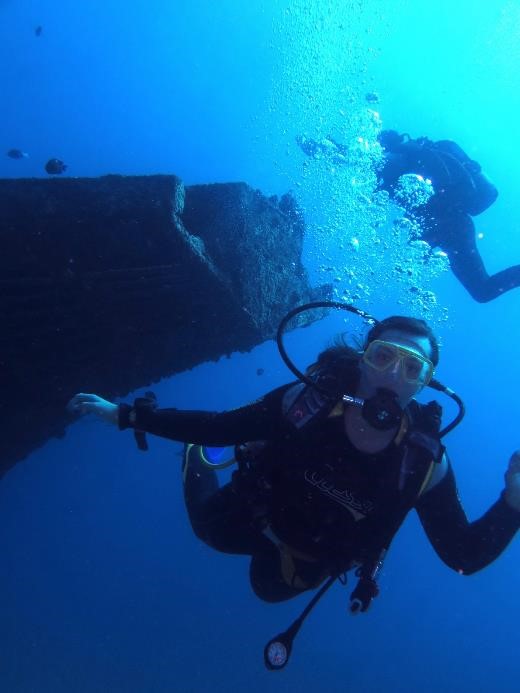 After a thorough briefing on the type of reef and safety procedures in the dive centre, you are good to go. Dive groups are small, and the dive masters and instructors are normally Mauritians, whose safety training and service levels are exceptional. The dive team loads the cylinders on board, and you saunter down to the boat in your wetsuit. You climb onto the boat and kit up your cylinder while the boat putters along to the dive site, normally 5 to 10 minutes away.
After a thorough briefing on the type of reef and safety procedures in the dive centre, you are good to go. Dive groups are small, and the dive masters and instructors are normally Mauritians, whose safety training and service levels are exceptional. The dive team loads the cylinders on board, and you saunter down to the boat in your wetsuit. You climb onto the boat and kit up your cylinder while the boat putters along to the dive site, normally 5 to 10 minutes away.
A backward roll and you are into amazing clarity and breath-taking fish life. In Mauritius, you don’t need to hunt for moray eels. I have countless videos of them hunting and killing on the reefs, and the extremely rare weedy scorpion fish is a superb example.
The visible re-growth of new corals and the re-establishment of coral reefs on this fabulous holiday island playground is undoubtedly world news.
Mauritius reefs are fairly deep on the global scale and to a certain extent they have been protected from the worst of the ravages of global over-heating of the sea.
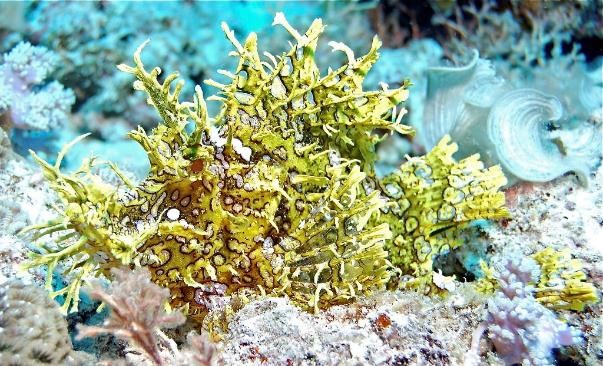
Against the global trend, where worldwide reefs are suffering from damage caused by over-population, over-fishing and pollution, there are tiny acrapora corals breaking through the previously dead areas of reef. Ever cautious, the scientists still have to establish the rate of growth, and the Marine biologists at Reef Mauritius in Pereybere are planning to put down coral growth plates to establish the rate of growth.
It’s also probably the safest place in the world to live right now, with a benign climate, unobtrusive governmental controls and almost zero crime. If you leave your handbag on the seat in the Mahebourg airport public lounge and go back to look for it an hour later after trying to check in unsuccessfully without your passport, it’s still there. If you leave your flip flops on the beach they are still there when you go to fetch them a week later. I have done both.
How does a nation that for centuries depended for its livelihood on sugar farming and subsistence fishing ever change its economy, and encourage its marine-dependent population to protect their resources? Mauritius did, and against the world trend, the coral reefs are re-growing.
The Mauritian Government incentivised its population away from sugar cane towards tourism in the early part of the century, and passed protective legislation to limit damage to the undersea world from over-fishing, agricultural chemical run-off, and to clean up the disposal of sewerage and encourage aquaculture.
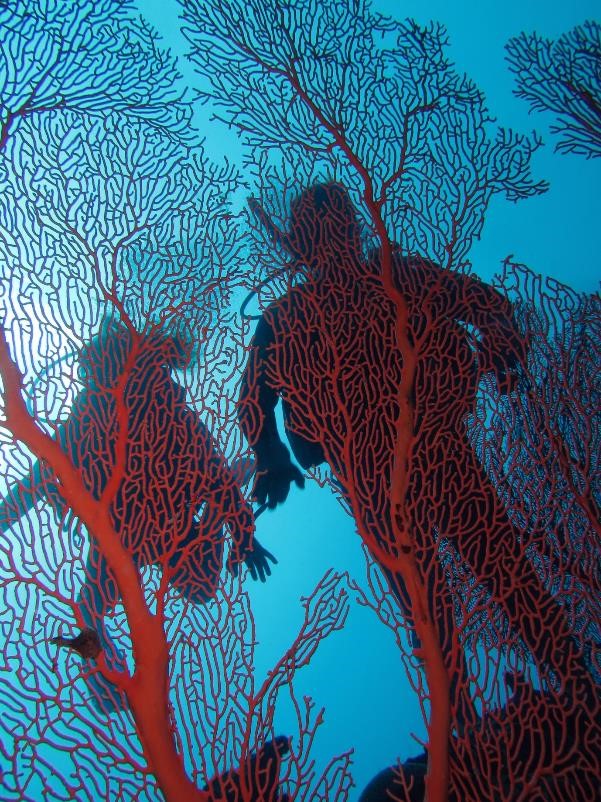
The legislation was clever, as it did not confront the sugar industry with dramatic change. Instead of passing draconian laws, Government introduced incentives that made the sugar companies happy to shift their focus. The IRS, or Integrated Resort Scheme was introduced to entice sugar farming companies to partner with property developers and build spectacular lifestyle resorts around the island. This not only limited sugar planting, with its chemical overspill into the sea, it also enriched the local population, weaning it away from subsistence level fishing.
The government passed legislation to enable the creation of protective tourism-based entities whose main entertainment offering was the marine world. High end five and six star tourist resorts sprang up on the most beautiful of the Island’s beaches, and of course it was in their commercial best interests to protect their primary attraction, and the resorts zealously guard their maritime resources. Most resorts have an affiliated dive operator, and all of them offer superb service to divers. Francois Besson of Diving World is typical of these, with a powerful conservation policy and a strong affiliation to one of the world’s leading resort chains.
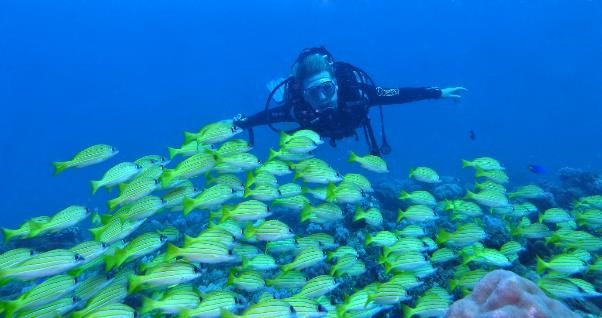
With the construction of Cyber City at Ebene, and the introduction of high speed fibre, the Mauritian population had an alternative source of revenue in the form of IT based activities and above all of call centres. This is a godsend for both English and French speaking companies, as Mauritius has a 95 percent literacy rate, and a highly intelligent labour pool, so the Islanders became less dependent on fishing for their daily meal. Wealth lessens any population’s dependence on its natural resources. The Mauritius supermarkets are packed with shoppers every evening and over weekends. Much easier to buy your food from the local supermarket than to get up at 4am, wheel the engine down to the boat, paddle out in a tiny skiff to load it up, then travel for 2 hours to the local fishing ground.
Mauritius undoubtedly offers some of the world best diving. It is varied, and can be relaxed, dramatic, adventurous or simply fun. The spectacular volcanic structure of the island lends itself to deep diving, where the deco divers can enjoy some spectacular scenery in over 40 metre viz where massive shoals of pelagic fish congregate. Many Europeans spend the winter months in Mauritius, diving with Ocean Spirit, and exploring untouched reefs.
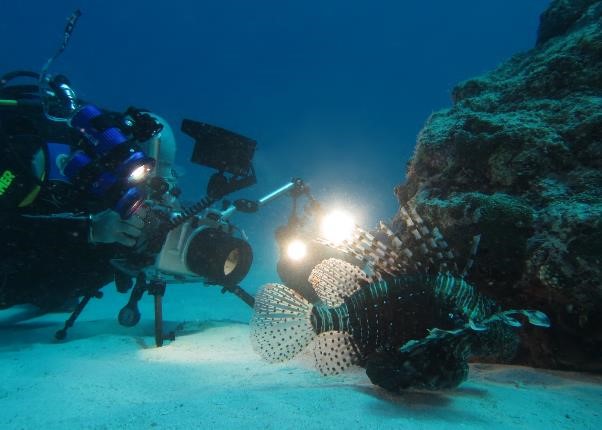
There are sensational dive sites on the East at Bel Mar and in the North in Pereybere where the current is so strong it’s like riding an undersea wave. There are mid-water cleaning stations where the giant tuna come in to be attended by minute cleaner wrasses and damsels, and increasing numbers of hunting barracuda and blue-fin kingfish. There are secret islands off-shore where there are washing machine circular holes filled with the oceanic white-tip sharks who come to spend the daylight hours sleeping, without fear of losing the water-flow over their gills that they need in order to stay alive.
Each reef is different, and all of them have something to offer the recreational diver, and of course it’s a wide-angle photographer’s paradise. In summer the viz can go up to 80 metres, and the lowest I have dived in was 15m viz in mid-winter on a turning tide.
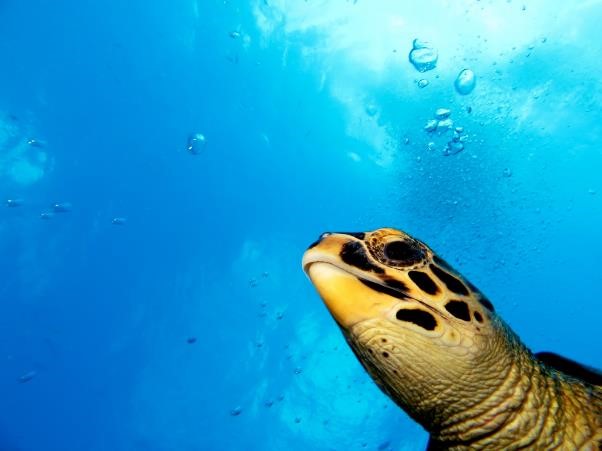
It is really exciting to see the once-dead brown corals sprouting new polyp-tips, and to see the burgeoning growth of the soft corals. With the growth of the soft corals come the coral crabs, banded pipe fish and bower shrimps, so Mauritius is rapidly becoming a paradise for macro photography. With the growth of the corals comes protection for the eggs of the shoaling fusiliers, big eyes, glow-fish, snappers and goat fish, and these are now showing up in massive hatchings that bring in the game fish.
Diving in Mauritius is exciting, and different from anywhere in the world.
It’s an Island with its reefs reborn through the clever intervention of an enlightened government.
[hr style=”single”]
Sources: CORALS and Indo-Pacific Reef Guide by Harry Erhardt and Daniel Knop
Pics: Jill Holloway
Pics: Chrystelle Besson Diving World
© Ocean Spirit
Marine Life & Conservation
Double Bubble for Basking Sharks

 The Shark Trust is excited to announce that, for two more days only, all donations, large or small, will be doubled in the Big Give Green Match Fund!
The Shark Trust is excited to announce that, for two more days only, all donations, large or small, will be doubled in the Big Give Green Match Fund!
Donate to Basking in Nature: Sighting Giants
The Shark Trust is hoping to raise £10k which will be doubled to £20k. This will go towards Basking in Nature: Sighting Giants. And they need YOUR help to reach they’re goal.
The Shark Trust’s citizen science project is to monitor and assess basking sharks through sightings; encouraging data collection, community engagement, and promoting nature accessibility. This initiative aims to enhance health and wellbeing by fostering a deeper connection with British Sharks.
Campaign Aims
- Increase citizen science reporting of Basking Sharks and other shark sightings to help inform shark and ray conservation.
- Provide educational talks about the diverse range of sharks and rays in British waters and accessible identification guides!
- Create engaging and fun information panels on how to ID the amazing sharks and rays we have on our doorstep! These can be used on coastal paths around the Southwest. With activities and information on how you can make a difference for sharks and rays!
- Promote mental wellbeing through increasing time in nature and discovering the wonders beneath the waves!
Donate, and double your impact. Click Here
Blogs
Northern Red Sea Reefs and Wrecks Trip Report, Part 1: Welcome to Adventure
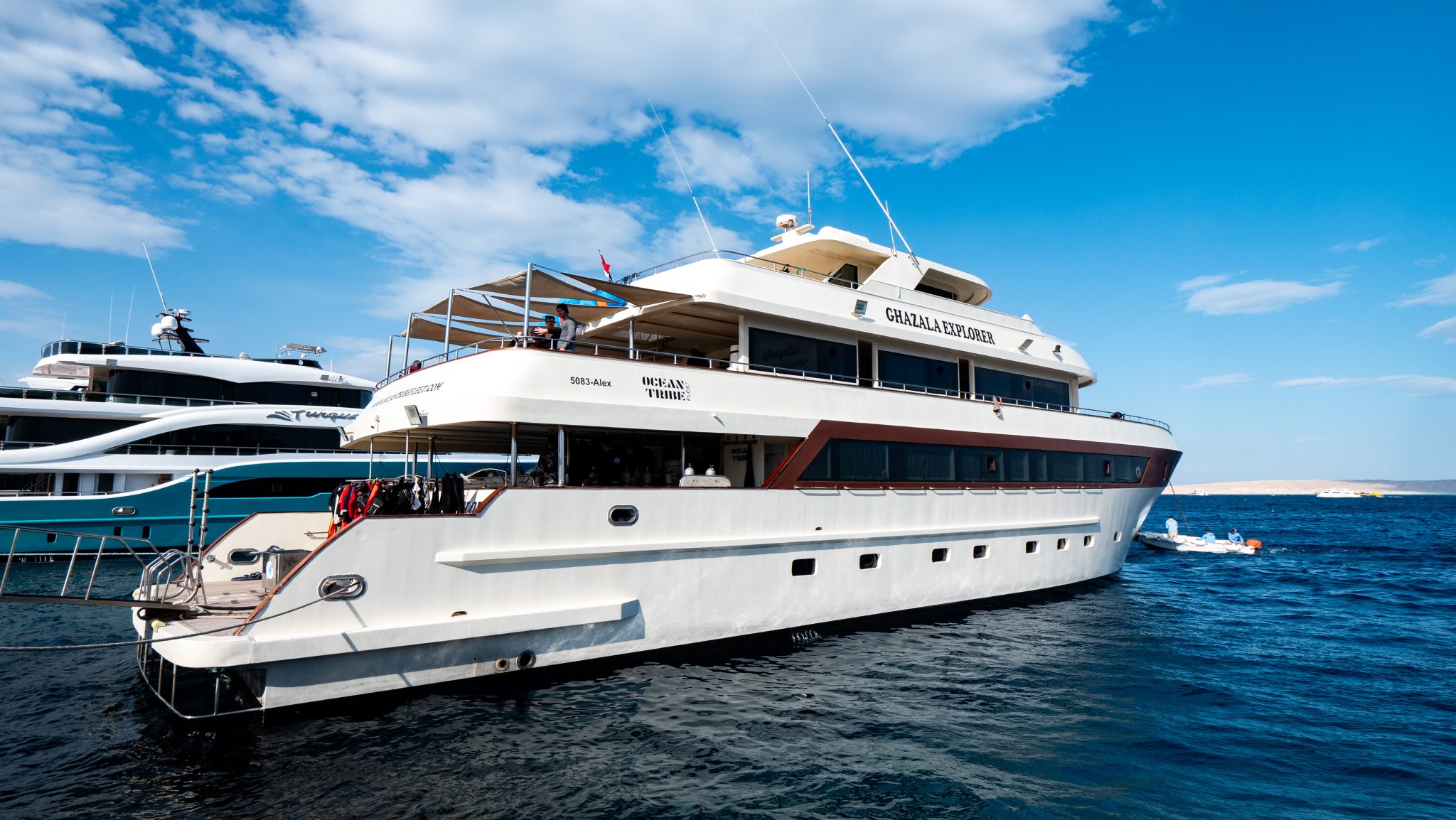
Jake Davies boards Ghazala Explorer for an unforgettable Red Sea diving experience…
The Red Sea is known for its range of dives, from bright, colourful reefs with a diverse array of reef species to world-famous wrecks scattered along its numerous atolls. The reefs and wrecks of the North Red Sea are one of the best ways to experience many of these.
Organised by dive tour operator specialist Scuba Travel, Ghazala Explorer was going to be home for the week for this exciting trip, a 37m steel-hulled vessel with top-class reviews by previous guests.

Departing from Hurghada, the plans were to head north for the first couple of days, including check dives on Global reefs, before then heading to see a few of the wrecks at Abu Nuhas reef. Then we would head across the Gulf of Suez into Ras Mohammed National Park to see what are considered to be some of the best reef dives in the Red Sea. From there, we would head to the Strait of Tiran for a day, then head back south to dive the world-famous wreck and one of the trip’s highlights: the SS Thistlegorm. This would include a night dive prior to heading back for the final day’s diving around Hurghada before heading back to port.
Arriving from Gatwick into Hurghada late in the evening, the Scuba Travel rep was waiting for arrivals ready to take us all to the Ghazala Explorer, docked in Hurghada’s New Marina. Stepping onboard, the high-quality and spacious deck spaces and interior provided an instant sense of comfort. There was a friendly welcome by the crew and guides. After some food, it was time for the boat briefing, which was detailed and covered all the important safety aspects of the vessel and procedures. The kit was then set up in the allocated spaces, and the spacious tables in the interior provided the perfect place to build up my camera ahead of the week’s trip. As soon as everything was done, it was time to head to the cabin to get some rest before an early start for a check dive.
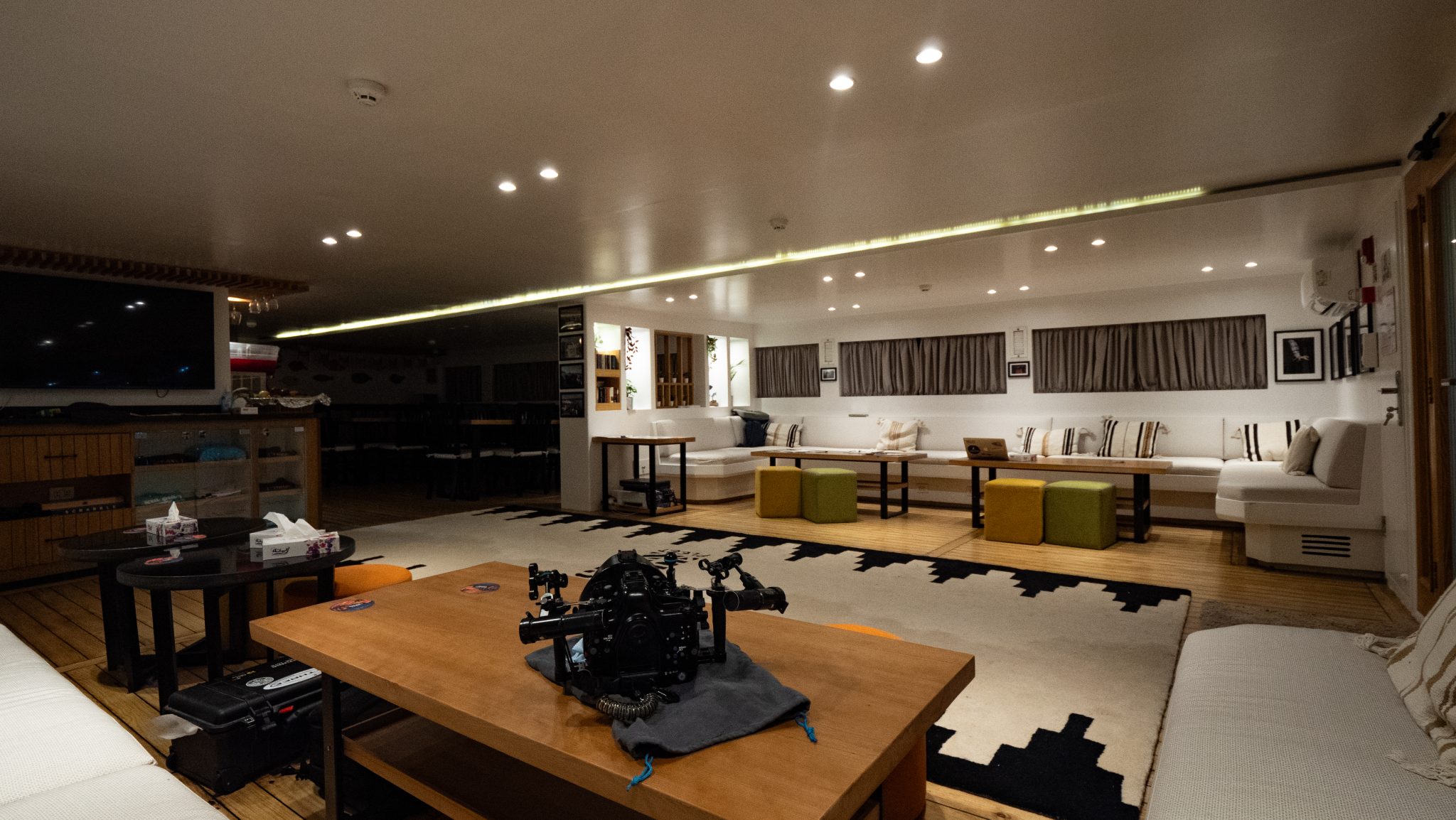
The northerly wind provided a chop, but it wasn’t felt as the steel hull of the vessel cut through each wave. By mid-morning, we were moored up at the reef at Gobal Island, sheltered from the chop on the other side. With Ahmed providing a detailed briefing, it was time to kit up and get in the water to explore some of the reefs below during the check dive. It’s always exciting to stand on the stern of the boat, looking into the clear blue water before taking a stride entry to enter the colourful coral scenery below.
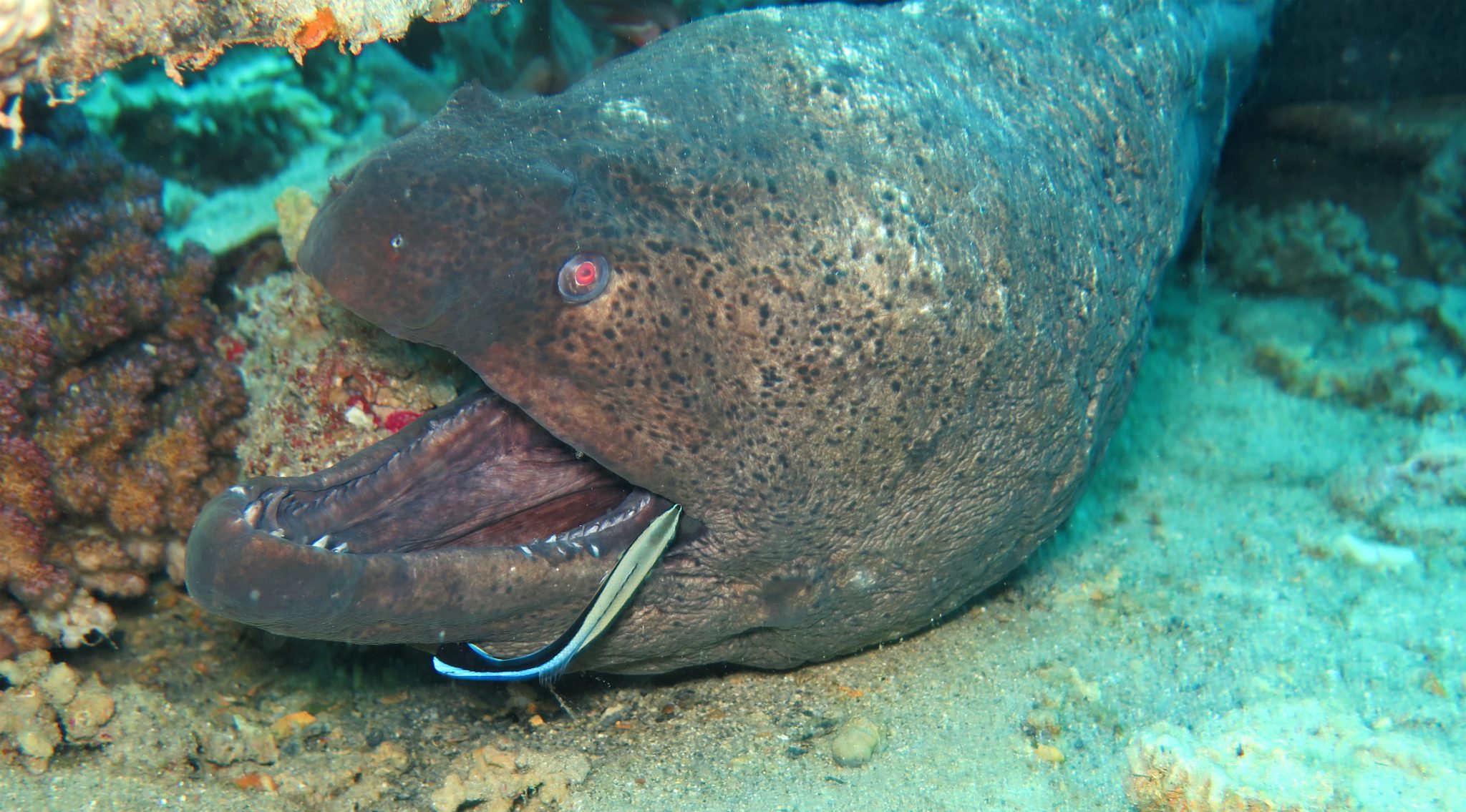
Like most of the dives on coral reefs in the Red Sea, the colours and busyness of the reefs were great to see. It was great to be back on the reefs, taking the time to watch the many species which make up the Red Sea ecosystems before picking out a few to film and photograph. The time flies by as you are constantly engaged with the surroundings, and then before I knew it, it was time to head back onboard, where everyone coming back from the water had big smiles and were full of excitement and anticipation for the rest of the week.
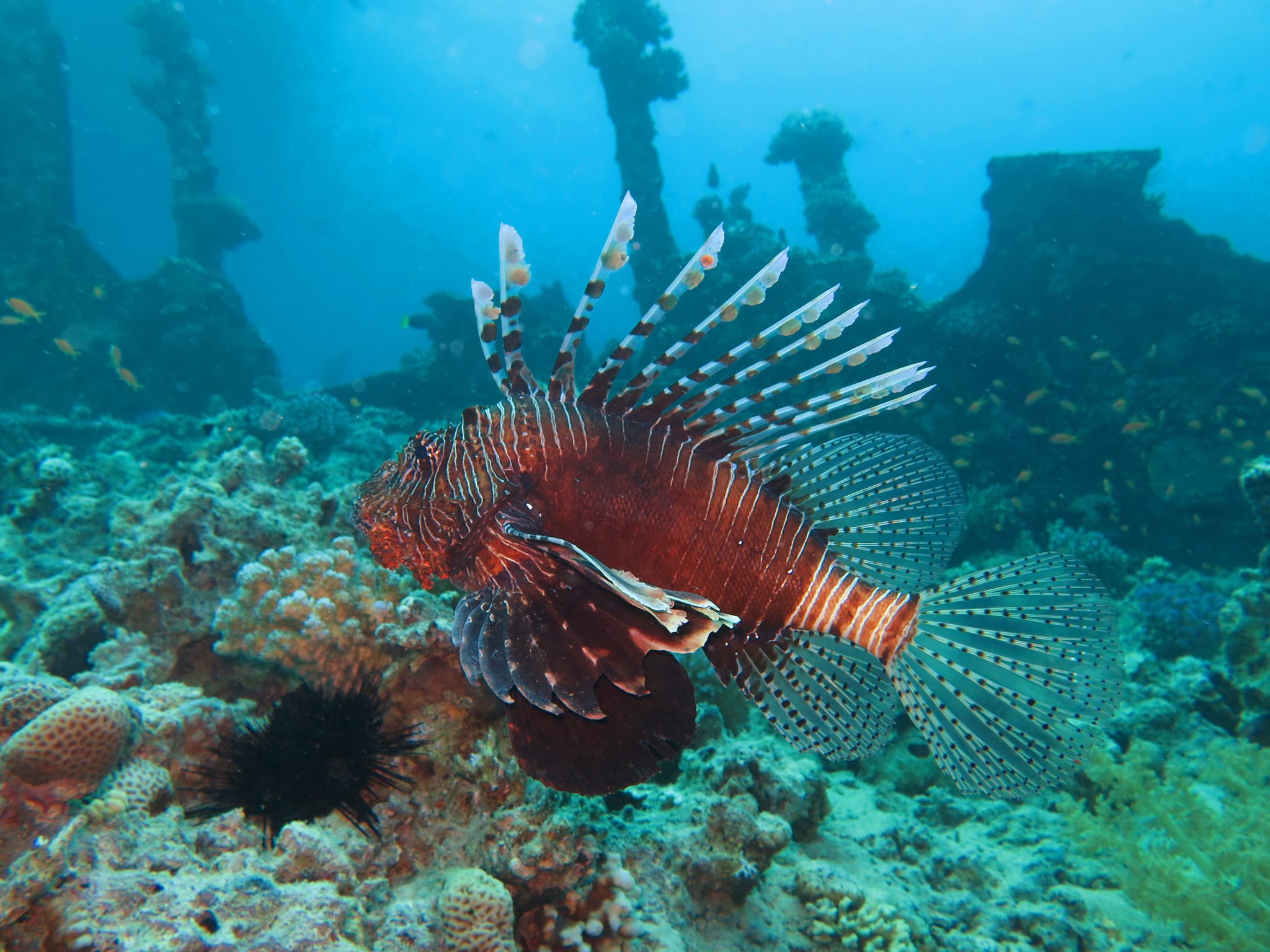
The next two dives, which included the night dive, were on the wreck of the barge, where very little remains act as an artificial reef for many species, which included a few perfectly hidden large stonefish and a crocodile fish camouflaging on the sand beneath the hull. Looking up though was the highlight of the dive, as a squad of squid could be seen mid-water, dancing around. Ascending slowly and calmly, I was able to position myself amongst the squad for the opportunity to get a few close-ups of this great species. Shortly after, the squid were then accompanied by a shoal of halfbeaks just below the surface. Everywhere was just full of life!
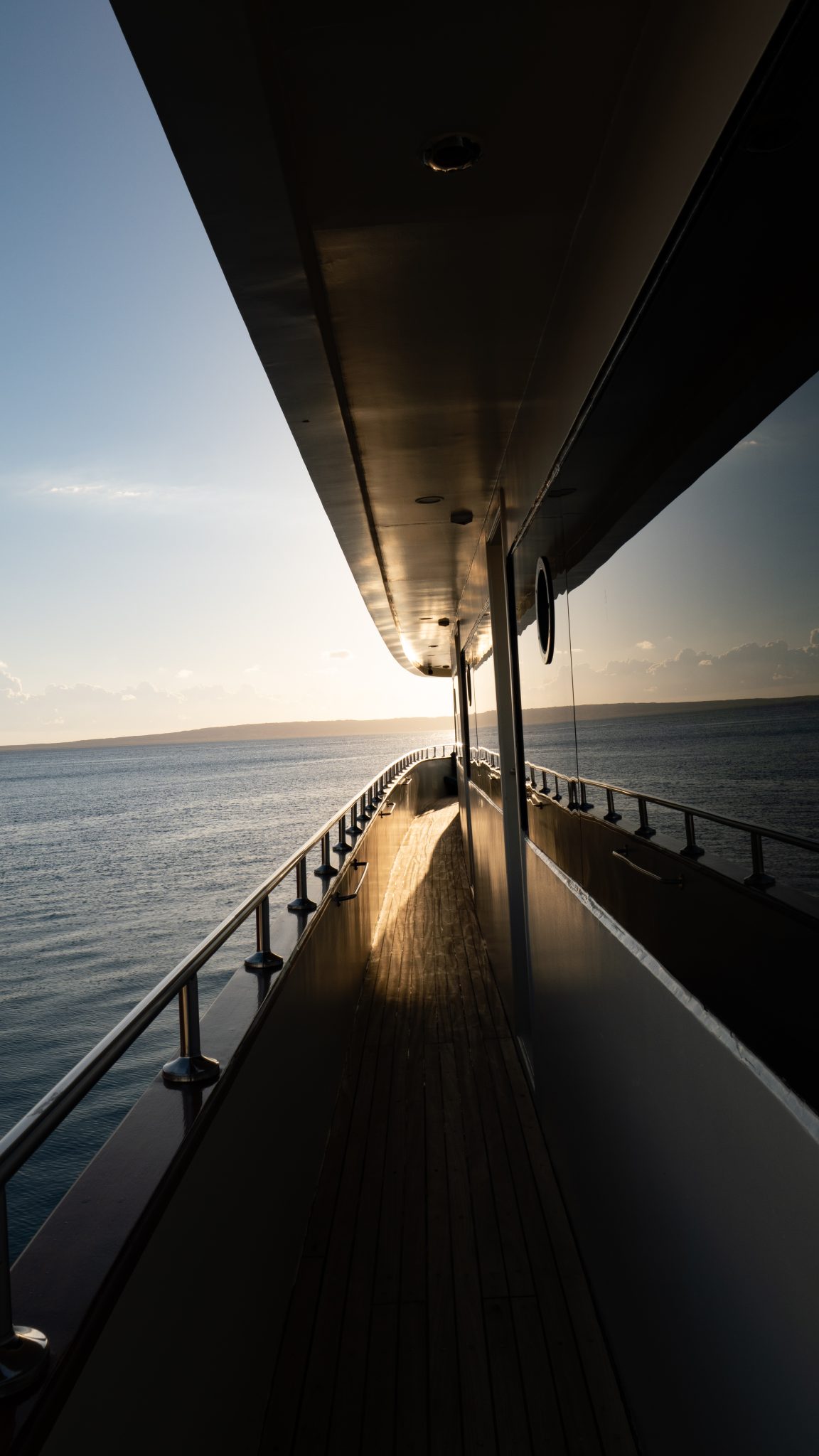
After some afternoon snacks, and as part of the safety protocols of the vessel, it was time to practice an emergency drill to put the briefings into action. The fire alarm rang, and we then had to carry out a full drill of getting the life jackets and using the closest emergency exits to then gather at the muster point on top deck where we would then have a run-through of the life rafts. The drill was great to do and I thought it was a really important part of the boat’s safety, as it was an opportunity to use the emergency exits to ensure a safe and effective evacuation, while also convening at the muster station to go through different scenarios and become familiar with some of the kit used during these emergencies.
Check in for Part 2 from Jake tomorrow!
To find out more about the Northern Red Sea reef and wrecks itineraries aboard Ghazala Explorer, or to book, contact Scuba Travel now:
Email: dive@scubatravel.com
Tel: +44 (0)1483 411590
Photos: Jake Davies / Avalon.Red
-

 News3 months ago
News3 months agoHone your underwater photography skills with Alphamarine Photography at Red Sea Diving Safari in March
-

 News2 months ago
News2 months agoCapturing Critters in Lembeh Underwater Photography Workshop 2024: Event Roundup
-

 Marine Life & Conservation Blogs2 months ago
Marine Life & Conservation Blogs2 months agoCreature Feature: Swell Sharks
-

 Blogs2 months ago
Blogs2 months agoMurex Resorts: Passport to Paradise!
-

 Blogs2 months ago
Blogs2 months agoDiver Discovering Whale Skeletons Beneath Ice Judged World’s Best Underwater Photograph
-

 Gear Reviews2 months ago
Gear Reviews2 months agoGear Review: Oceanic+ Dive Housing for iPhone
-

 Marine Life & Conservation2 months ago
Marine Life & Conservation2 months agoSave the Manatee Club launches brand new webcams at Silver Springs State Park, Florida
-

 News3 months ago
News3 months agoWorld’s Best Underwater Photographers Unveil Breathtaking Images at World Shootout 2023

















